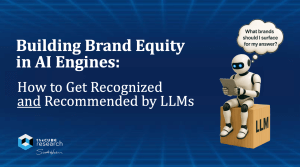Moving at the Speed of NVIDIA
Premise
Our analysis suggests that Jeff Clarke’s Day-Two keynote at Dell Technologies World 2025 does three things at once:
- Quantifies the surging economics of generative AI with eye-popping metrics on cap-ex, tokens, and power draw;
- Positions the Dell AI Factory as a pragmatic on-ramp for enterprises that require on-prem AI and AI at the edge; and
- Signals a shift (albeit slowly) from proof-of-concept to enterprise grade, on-prem agentic systems, while subtly acknowledging that today’s Dell portfolio still stops short of the full-lifecycle services available in the public cloud.
We believe Clarke’s argument is directionally compelling i.e. the next tranche of enterprise AI workloads will be gravity- and latency-bound to corporate data and will demand tightly integrated infrastructure and AI tooling. Yet, as we outline below, despite apparent cost advantages, Dell must still knit together a data-plane, governance, turnkey MLOps, curated model marketplaces and agentic orchestration software before it can claim parity with hyperscalers.
Metrics that Matter
Jeff Clarke’s keynotes are always packed with meaningful metrics. Below is a summary of this year’s lineup as best we could capture.
| KPI | 2024-25 Baseline | 2028 Trajectory | Delta / Insight |
| Global AI Cap-Ex | ~$400 B (2025E) | N/A | Surpasses Apollo-era spend ($274 B, adj.) in a single year—underscores systemic capital reallocation. |
| Tokens Generated | 25 T (2024) | 35,000 T | 1,400× growth in four years drives what Clarke calls “token factories.” |
| Inferencing Compute Intensity | Baseline 2024 | 100× higher than 2024 forecasts | Enterprises systematically underestimated serving costs. |
| Cost per Token / Cost to Train Foundation Model | 2019 baseline | Down 10,000× – Up 10,000x by 2024 | Moore-like curve offsets cap-ex surge, but shifts burden to energy. |
| Unutilized Data-Center Power | 39 % of installed watts | N/A | Implies massive headroom for AI workloads—but also inefficiency. |
Our analysis shows that the most salient figures are 10K× token cost deflation with cost to train the opposite direction. In our view, these metrics explain the enormous challenges of building foundation models. It requires leading companies like OpenAI, Anthropic, Meta and xAI to fund billions in training clusters despite the 10× jump in model-training price tags. The marginal economics now favor owning differentiated models because payback is measured in months, not years.
Dell AI Factory: What’s New and What’s Not
Clarke claims Dell has helped 3,000 customers stand up AI factories and the company has shipped more than 200 new features in 12 months. This is why our subtitle implies NVIDIA’s partners must move fast and try to keep up. The incremental announcements break down into three areas:
- Disaggregated, GPU-dense racks
GB200/B300-ready nodes with liquid cooling target 100 kW racks. Dell’s messaging stresses open, modular rather than proprietary converged blocks, a message to buyers seeking mix-and-match silicon optionality (NVIDIA, AMD, Intel Gaudi 3). - Storage-centric data fabrics
A refreshed PowerScale/ECS tier couples NFS objects with low-latency NVMe, reinforcing our view that storage, along with networking, continue to join compute as key cogs in the balance of AI systems performance and value. - Edge-first PC NPUs
Clarke’s forecast that “RAG on the laptop” will proliferate as NPUs proliferate in the client fleet positions Dell to capture a campus-edge footprint the hyperscalers may struggle to reach.
Our research indicates these are necessary but not sufficient. Dell still lacks the optionality of AI stacks that are seen in the cloud. From data stacks, model gardens, AI tooling, governance and agentic frameworks. Partnerships with Glean and Cohere are encouraging but in our view Dell must 100x these types of deals, and importantly, turn them into solutions. Until those layers arrive, enterprises will continue to bolt third-party stacks atop Dell iron, adding friction the public cloud solved half a decade ago.
The Internal Use-Case Playbook—Dell Eats its Own Dog Food
Clarke’s shares Dell’s early-stage AI chaos (900 shadow AI projects) is instructive. The path he outlines mirrors what our customer conversations and research show that work across the Global 2000:
- 90-day sprints governed by a Chief AI Officer (who will eventually fade into the divisions).
- Five primary use cases tied to (in Dell’s case) revenue, supply-chain velocity, GTM productivity, and services.
- Data-mesh unification of five proprietary datasets, including case logs, knowledge base, call-home telemetry, dispatch events, repair outcomes.
The showcase was a GenAI Service Assistant deployed on a single on-prem rack (dual Xeon R740xd, four A-series GPUs) with a quoted ROI inside of 3 months:
Apply AI to a shitty process and you get a shitty answer faster —Clarke
We agree. These are words to live by. Our interviews with business leaders confirm that process simplification—not GPU inventory—is the critical success factor. Clarke’s framework offers a credible blueprint for CFOs who remain skeptical of AI’s payback period.
Cohere Conversation: Why Open Weights Matter for On-Prem AI
Clarke’s fireside chat with Cohere, although brief, was strategically significant in our view, underscoring:
- Model neutrality: Cohere’s Command-R family is openly licensed, enabling enterprises to deploy on Dell iron without GDPR or privacy anxiety.
- Retrieval readiness: Cohere’s in-memory RAG stack complements Dell’s high-throughput storage, creating a turnkey pathway for domain-specific copilots.
- Fine tuning efficiency: Cohere advocates low-rank-adaptation (LoRA) on 8-bit weights, Cohere implicitly validates Dell’s claim that buyers don’t need the very latest GPUs to gain business value.
Our view is this is a smart hedge against the closed-weight-plus-API approach put forth by the likes of OpenAI and Anthropic. However, without a curated model registry and click-to-deploy pipelines, Dell risks pushing customers into “DIY Hell” elongates time-to-value.
CoreWeave Snapshot: Hyperscale Lessons Migrate Downstream
The conversation with CoreWeave CSO Brian Venturo served two purposes in our view:
- It certified Dell as the rack-level partner behind what many consider the most GPU-rich public cloud (110 K GPUs, 240 MW).
- It reinforced Dell’s emphasis on Time-to-First-Token as the new SLA, a metric that will matter more than peak FLOPS.
We believe the sub-text implies Dell is productizing the automation, telemetry, and failure-domain isolation techniques learned at CoreWeave and porting them to the enterprise for on-prem SKUs. That is a differentiated story versus white-box ODMs.
Filling the Enterprise-AI Stack Gap
Despite the progress, the on-prem ecosystem remains fragmented relative to cloud services such as SageMaker, Bedrock, Vertex AI, Gemini, Azure AI Studio, etc. Some examples of tooling enterprises request include:
- Managed / programmatic labeling & synthetic-data generation
(Third-party tools like Scale or Gretel.ai to our knowledge are lacking in Dell’s core services).- Experiment tracking and lineage
Wide ranging open-source tooling that is available in the cloud.- Feature stores & vector DBs
Snowflake Arctic, Databricks Vector Search, Pinecone, integrated MongoDB, Milvus, etc. typically fill the gap.- Policy-as-code and audit
Cloud governance stacks (e.g., AWS Guardrails, Azure Purview) still set the standard.Currently, Dell’s stack above the AI Factory relies primarily on NVIDIA’s software stack, developer on-ramps and a handful of partners. As such, the Dell AI Factory is a substrate. It’s critical, but only layer of the full cake. Strategic ISV partnerships or tuck-in acquisitions will be required to complete the story.
Recommendations for Practitioners
- Start with data, not GPUs. Clarke’s discipline (mesh-first, five use cases) should be emulated before any purchase order is cut.
- Target sub-six-month payback projects. Customer examples include contact centers, quote-to-cash assistants, marketing documentation, coding assistants and inventory optimizers routinely meet this hurdle.
- Don’t wait for GB200s. Even though customers want the latest and greatest, 80-GB H100s or MI300Xs are sufficient for most enterprise models (e.g. 10 B fine-tuning).
- Budget for power retrofits. Our research suggest every megawatt of new AI load will drag multiple millions in capital expense for networking, cooling, and power costs which will detract from ROI.
Plan for an eventual SaaS/AI tooling overlay. Whether via Cohere, Starburst, Cloudera, Snowflake/Databricks-like capabilities, open table formats etc. enterprises will layer managed services on top of Dell bare metal. Budget OPEX accordingly.
Bottom line
In our opinion, Jeff Clarke just elevated Dell AI Factory from a 2024 marketing construct to operational early days. The keynote’s blaze of metrics – e.g. 35 quadrillion tokens by 2028, 100× inferencing loads, 39 % stranded power, etc. underscores why on-prem factories are no longer optional for data-rich enterprises. Yet the cloud giants still own the higher rungs of the stack with data platforms, unified governance, turnkey MLOps, and a deep and wide marketplace.



